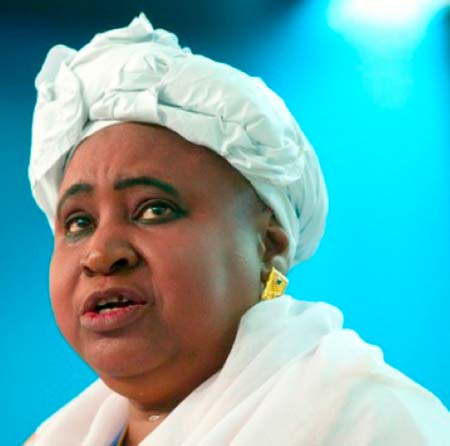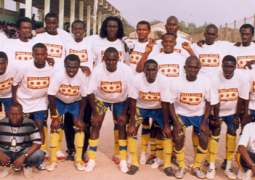
Vice President Isatou Njie Saidy, on behalf of President Yahya Jammeh, over the weekend presided over the commemoration of the Banjul Bicentenary event, held at July 22nd Square in Banjul.
The event brought together dignitaries, local authorities and senior government officials from across the country.
The programme began with a carnival of masquerades and cultural displays, in a procession from Arch 22 and Banjul Mini Stadium through the streets to 22nd July Square.
Delivering the speech of President Jammeh at the event, VP Njie-Saidy said: “It is with great pleasure that I am here today to join the people of Banjul to commemorate the 200 years of the founding of Bathurst, now Banjul as a permanent settlement.”
She added that it is a historic event worth remembering, as it is a defining occasion in the rich history of The Gambia which the march of time cannot efface.
“Rather it offers a unique opportunity for us to reflect on the milestones traversed in the last 200 years in order to understand the present and better prepare for the future”.
The speech recalled briefly the historical background surrounding the epoch-making event.
“Geographically Banjul stands on the mouth of the River Gambia, acknowledged as far back as the first millennium of the modern era as the greatest and most mysterious waterway in the eastern seaboard of the Atlantic Ocean.
“Indeed the first written mention of the River Gambia was by Hanno the Carthaginian in his writings the Periplus about his voyage to West Africa in 470 BC.
“Much earlier Herodotus is on record that Phoenicians employed by Pharaoh Necho circumnavigated Africa and it is believed that they entered the River Gambia which is endowed with the largest and most navigable estuary along the coast, and being navigable for nearly 800 kilometres offers the best means of access to the lucrative trade in gold and ivory especially in the interior of West Africa.”
According to the statement delivered by the Vice President, it was believed that the River Gambia was connected with the Rivers Niger and Senegal respectively, thus constituting a waterway from Gambia to Nigeria.
“That belief is understandable in that all three rivers take their source from the Fouta Jallon Mountains in the Republic of Guinea.”
“By the time the Portuguese navigators discovered the River Gambia in the fifteenth century and landed on Banjul island, the island was already thinly inhabited by itinerant populations from neighbouring Kombo and Foni in the South bank and from Niumi in the North.
“They collected fibres from Baobab trees for making ropes and oysters and oysters shell for making lime. The local people called the island Banjoulo, but this quickly changed to St. Mary’s Island when under a so-called Treaty the King of Kombo ceded the island to Captain Alexander Grante under questionable conditions. Thus Banjul became a strategic site for a garrison for a more effective control of the River Gambia recognized as British territory under the Treaty of Paris (1814).
“Banjul was soon renamed Bathurst after Lord Bathurst the erstwhile Secretary of State for the Colonies. But the British were never seriously interested or committed to developing Bathurst, and that attitude remained throughout their colonial occupation.
“Notwithstanding, our valiant forebears from both sides of the estuary (north and south) never accepted the foreign alienation of the island or any part of Gambia for that matter. The struggle was notably led by Foday Sillah and Foday Kaba Doumbuya, among others, with the full and courageous support of their people. Many gave their lives for the love of freedom.
“This struggle for freedom and the liberation of our motherland continued and developed in the 19th century with emergence of the Creole elite of Banjul among whom Francis Small was perhaps the most prominent. He, amongst others of his generation, was instrumental in making it impossible for the Anglo-French deal to exchange Gambia with French possessions further south like Grand Bassam in present Cote d’Ivoire and Gabon.
“The attractiveness of Gambia was simply the grand old river and the geostrategic advantage of Banjul whose 200 years we are today commemorating as a historic reality from which to draw realistic lessons. Thus the events of the 19th century impacted on the political developments of the 20th century culminating in the July 22 (1994) which marked the effective and real liberation of The Gambia and its people. “This is the historic background against which we are here today not to celebrate but in remembrance of the past and all the valiant people participated in the difficult process which makes us enjoy our freedom today and control of our destiny.
“It is this sense of history that I discerned when the Mayor brought to my attention his intention to organize the commemoration of the 200 years of Banjul and which made me give my full support.”
In his welcome remarks, the Mayor of Banjul, Abdoulie Bah, thanked councillors, staff and the organising committee, for their support and hard work to ensure the historic event was successful.
He also expressed satisfaction in the massive mobilization of the people of Banjul and Gambians, in general, who in one way or the other supported the programme and brought it to fruition.
Read Other Articles In Article (Archive)



